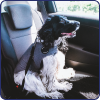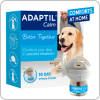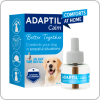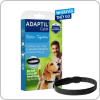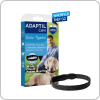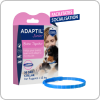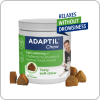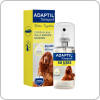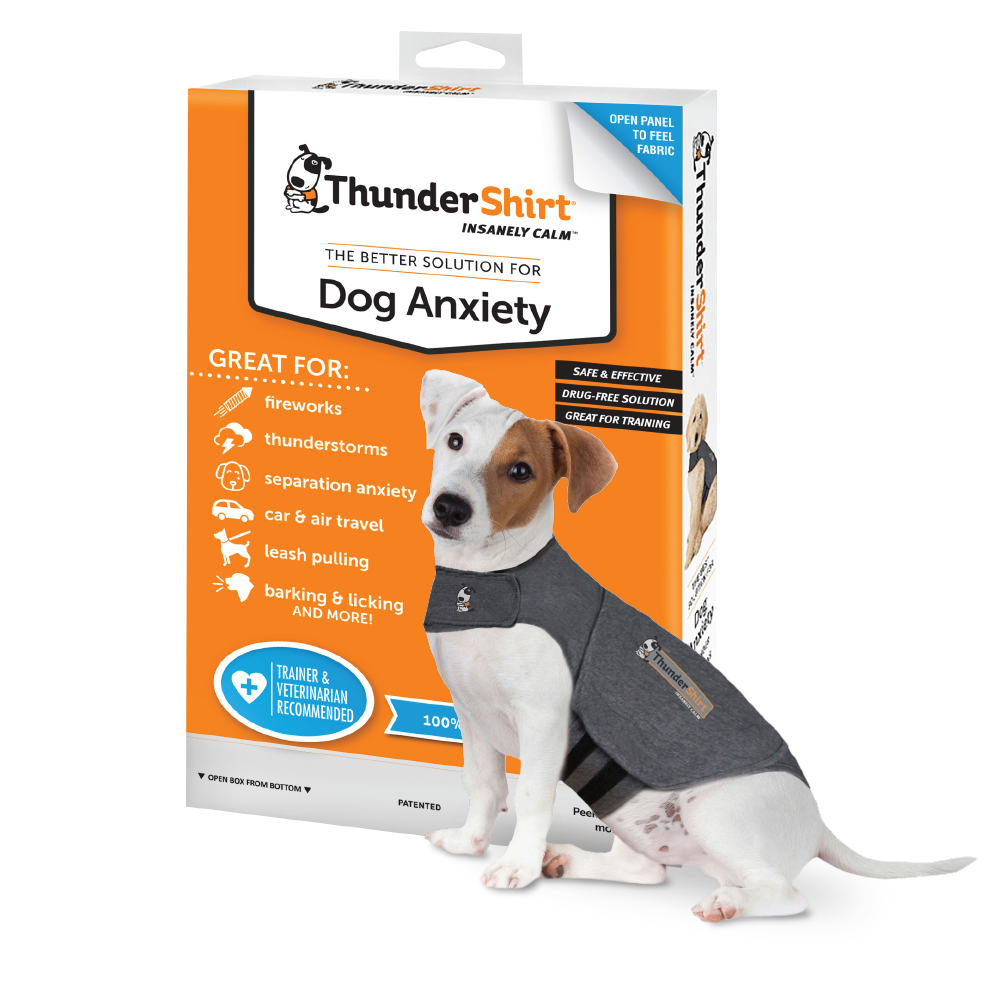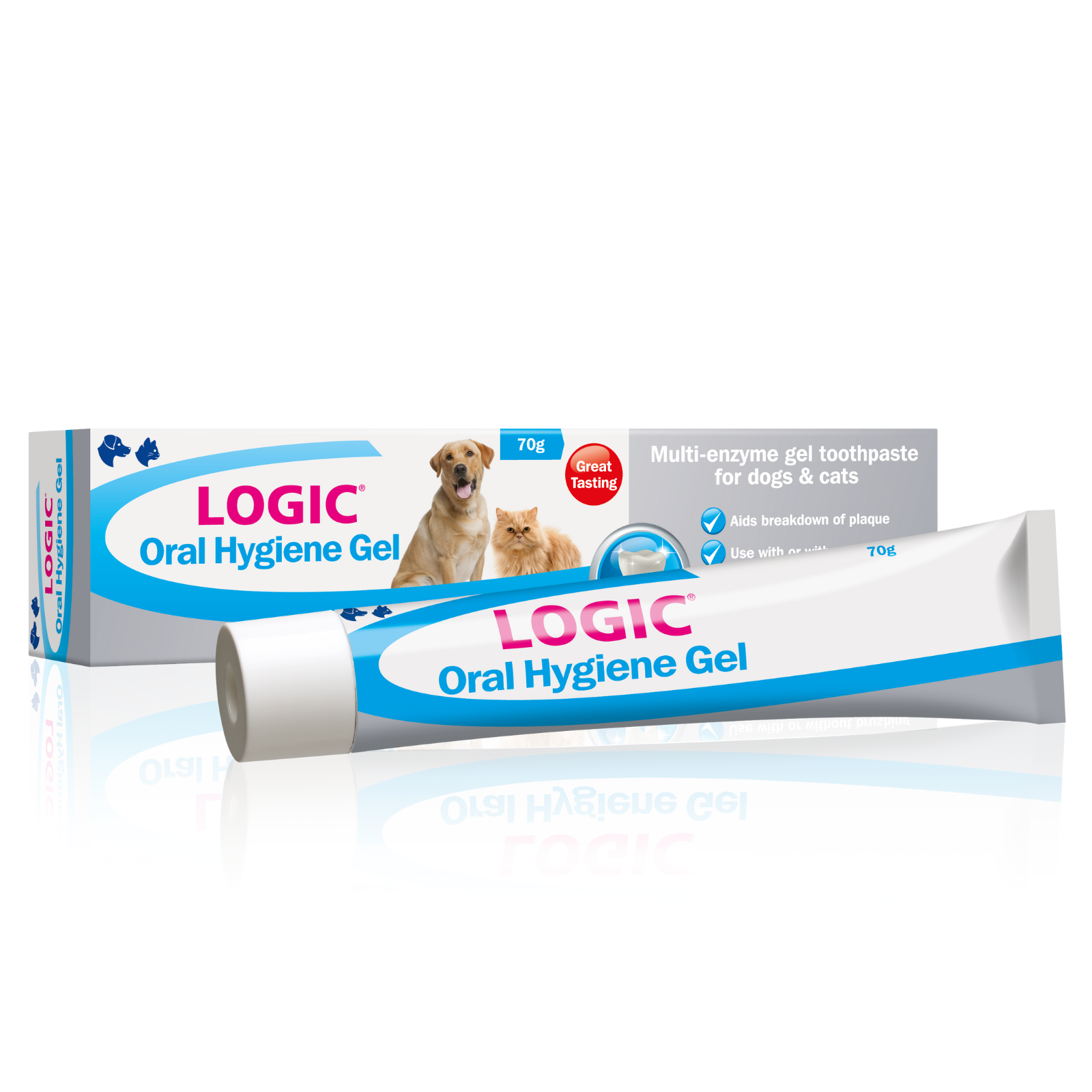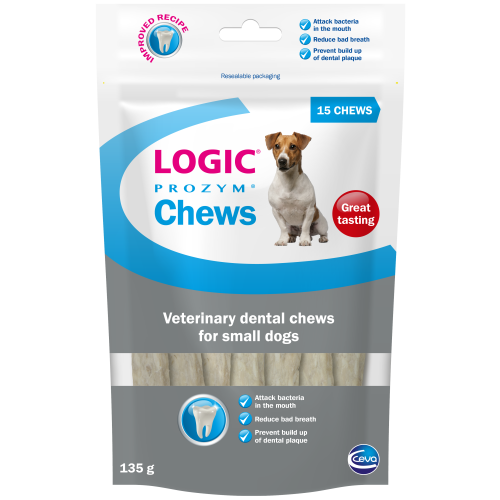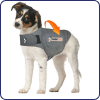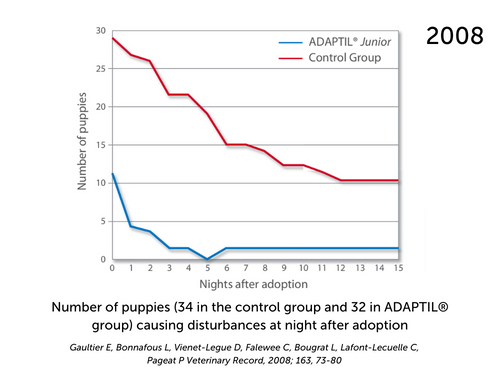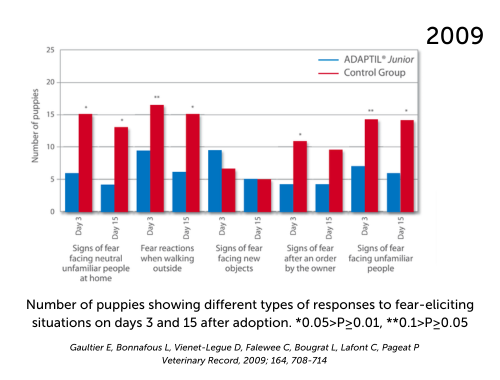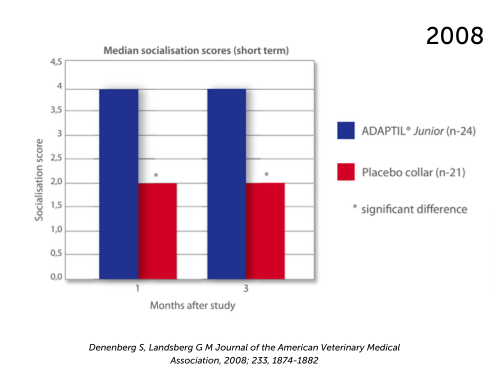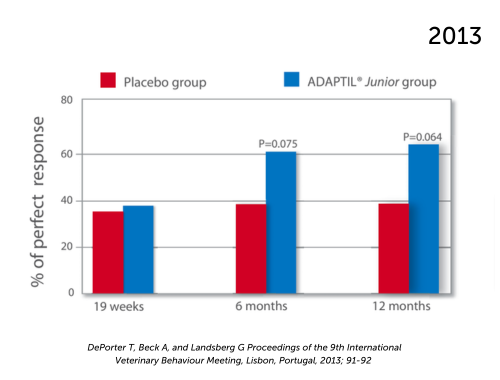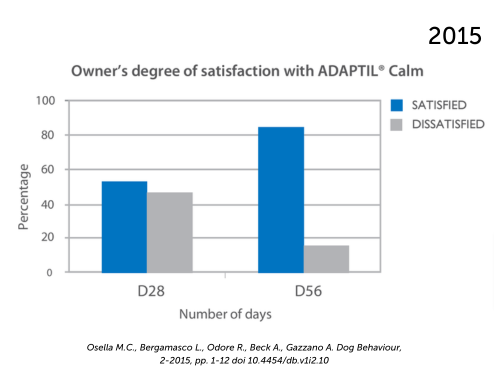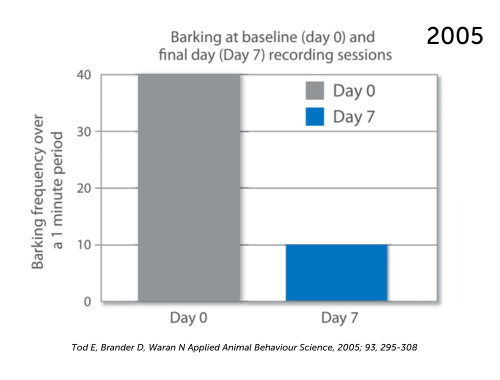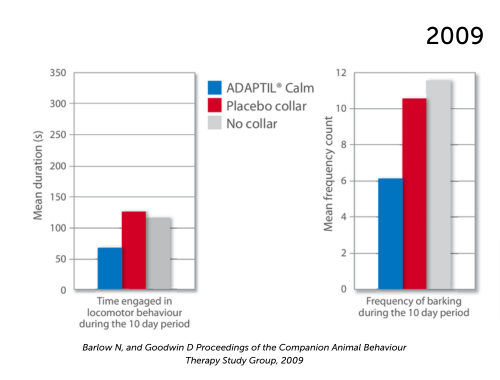A double-blind, placebo-controlled trial was carried out to investigate the effect of ADAPTIL® (D.A.P.®) on 60 pedigree puppies, aged between 6 and 10 weeks, as they entered their new home.
A few days prior to arrival, the new owners were asked to plug in either a ADAPTIL® Calm Home Diffuser or a placebo diffuser. Puppies were monitored for a total of 8 weeks following their adoption. Owners were asked to fill in a form assessing disturbances.
The effect of the treatment, together with the gender of the puppies, maternal environment, use of puppy crates and experience of owners were included in a general linear model to explain the total number of nights spent disturbing and house soiling.
Results
Over 70% of puppies sleeping alone caused disturbance during the first night. The average total number of nights of disturbance over the 8 week period was between 5 and 6 nights, mostly in the first week in the home. ADAPTIL® significantly improved the gundog breeds - gundogs receiving the placebo cried for a median of 9 nights, while those receiving ADAPTIL® cried for a median of 3 nights (p=0.003). Sleeping with another dog reduced the puppies’ tendency to disturb at night to almost zero. No effect on house soiling was seen.
Conclusion
This study suggests that, when puppies are going to homes with no other dogs, ADAPTIL® may help to reduce the likelihood of prolonged disturbance at night, particularly if the puppy is a large breed dog


